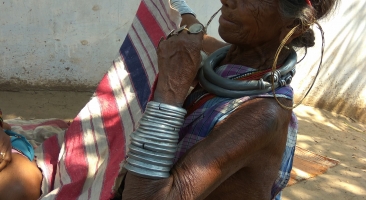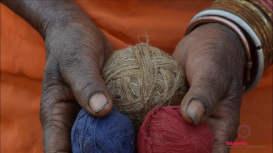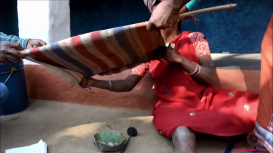Kerang takes us to that period when human beings had a close relationship with nature, as bark is one of the earliest known examples of handmade cloth to cover the human body. Kerang is woven by Gadaba women on a back-strap loom to cover the body along with heavy jewellery around the neck and arms. The research illuminates several narratives related to the Gadabas’ material culture: how their local knowledge system created bark thread into cloth that imitates tiger skin and how this became a protective and sacred cloth. Development interventions have diluted the cultural architecture of the Gadaba community to a great extent. This module encompasses documentation through videos, photographs, narrative accounts and interactions in villages where Kerang remains are still visible.



